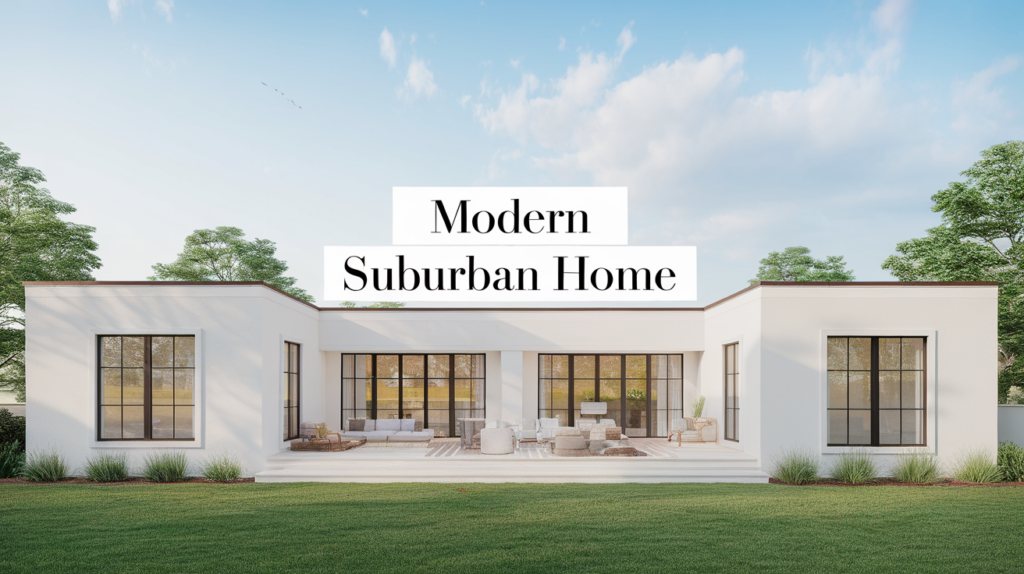Modern suburban homes are growing in popularity across the country. They combine fresh design with comfort for daily living and are built to meet the needs of today’s families.
People like modern suburban homes because they feel open and bright. Many have simple shapes, large windows, and clean finishes. The layout often connects rooms for better flow and ease of use.
These homes also offer outdoor space, which is important in the suburbs. Yards, patios, and driveways give people more room to relax or play.
The key is to mix modern design with comfort. A home should look neat but also feel easy to live in. That balance is what makes modern suburban homes so appealing.
What Are Modern Suburban Homes?
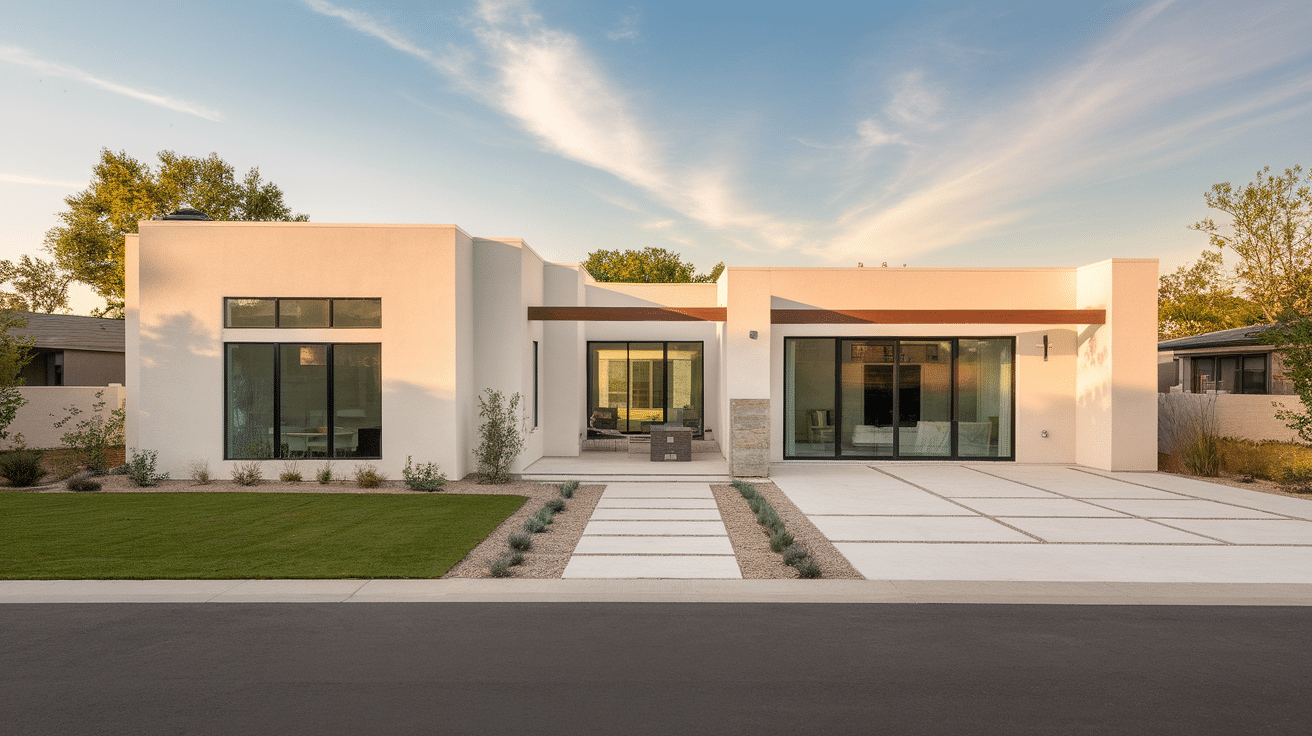
Modern suburban homes are homes located just outside city areas, built with updated design and smart layout.
These homes are made for everyday life, offering a mix of comfort, simple beauty, and good use of space. They are designed to feel open, bright, and connected to the outdoors while also being easy to care for.
Modern suburban homes focus on clean shapes, soft colors, and natural light. They are different from older styles because they remove extra details and instead focus on function and ease.
These homes are popular with families, couples, and anyone looking for a calm space that still feels new.
Key Features of Modern Suburban Homes:
- Open floor plans: Living, dining, and kitchen areas are often joined together, helping the space feel bigger and more connected.
- Clean lines: Simple shapes and edges give the home a neat and modern look.
- Large windows: Big windows let in lots of light and help rooms feel bright and fresh.
- Neutral color schemes: Soft shades of white, beige, gray, or brown make spaces feel calm and easy to decorate.
- Easy outdoor access: Sliding or French doors often lead to patios, decks, or gardens for more usable space.
- Low-maintenance design: Materials and finishes are chosen to be easy to clean and long-lasting.
- Simple décor: Instead of heavy patterns or bold details, these homes use light textures and natural touches.
These homes are made for real life, giving space to relax and enjoy time at home. Their simple design helps them stay useful and appealing for years to come.
Architectural Styles and Design Elements
Modern suburban homes often combine design elements from the past and present. These homes blend clean forms, comfort, and useful spaces. Let’s take a closer look at the main styles and how they shape today’s suburban homes.
Mid-Century Modern Influences
Mid-century modern style played a big role in shaping modern suburban homes. It focuses on simple forms and clean lines that make the home feel open and easy to live in. This style keeps things uncluttered and helps rooms feel calm.
Large windows and open layouts are key features. They let in natural light and connect the inside of the home to the outdoors, making the space feel bigger and more inviting.
Flat or low-pitched roofs and one-story layouts are also common. These features were popular in the 1950s and still feel fresh today. The mix of style and function makes this design a lasting favorite.
Contemporary Features
Contemporary homes often use newer building materials. You’ll see metal roofs, fiber cement siding, and energy-efficient windows. These materials help reduce maintenance and support greener living.
Clean lines and open spaces are central to this design. The focus stays on comfort without extra detail, making it easy to move around and use every part of the home.
Inside, you might find LED lighting, smart home tools, and easy-to-clean surfaces. These homes are made to fit today’s lifestyle, and their design supports both beauty and practical needs.
Fusion of Traditional and Modern Styles
Some modern suburban homes mix older looks with newer ideas. They may use a classic shape with simple siding and then add metal railings or big windows, giving the home a fresh but familiar feel.
Traditional front porches and pitched roofs still appear in many designs. These features bring comfort and a sense of place, but they’re now matched with open layouts and light-filled rooms.
This mix works well for many homeowners. It feels warm like older homes but still looks fresh. It’s a smart way to update suburban design without losing what people love about it.
Interior Design Trends in Modern Suburban Homes
Modern suburban homes focus on comfort, function, and clean design. Inside these homes, spaces feel open, calm, and easy to live in. The following trends show how today’s homes are made to feel both fresh and practical.
Open-Concept Living Spaces
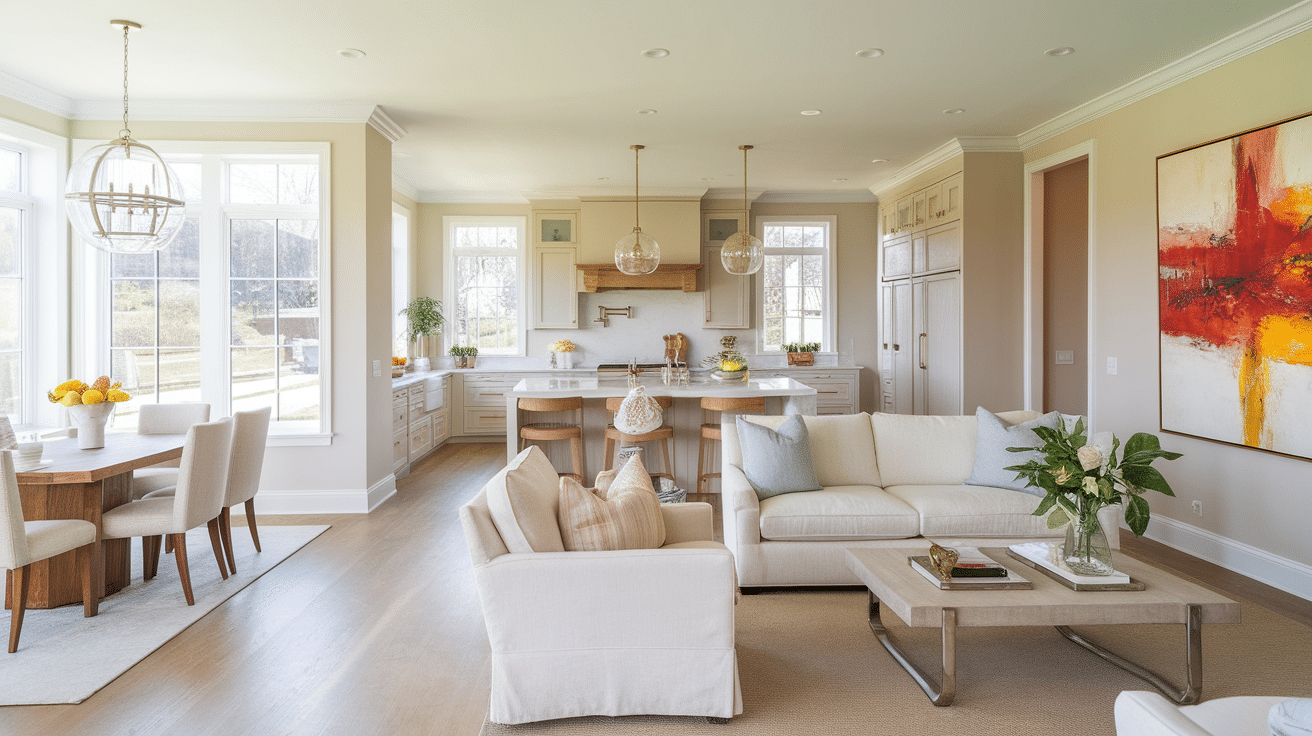
Open-concept designs connect the kitchen, dining, and living areas into one big space. This setup helps families spend more time together and makes the home feel bigger. Walls are removed so light can flow easily from room to room.
With fewer barriers, furniture placement becomes more flexible. You can use rugs, couches, or lighting to create “zones” within the open space. This makes it easier to entertain or relax.
These layouts work well for small and large homes. They support daily life and special moments with equal ease, making them one of the most popular design choices in today’s homes.
Natural Colors and Materials in Suburban Homes
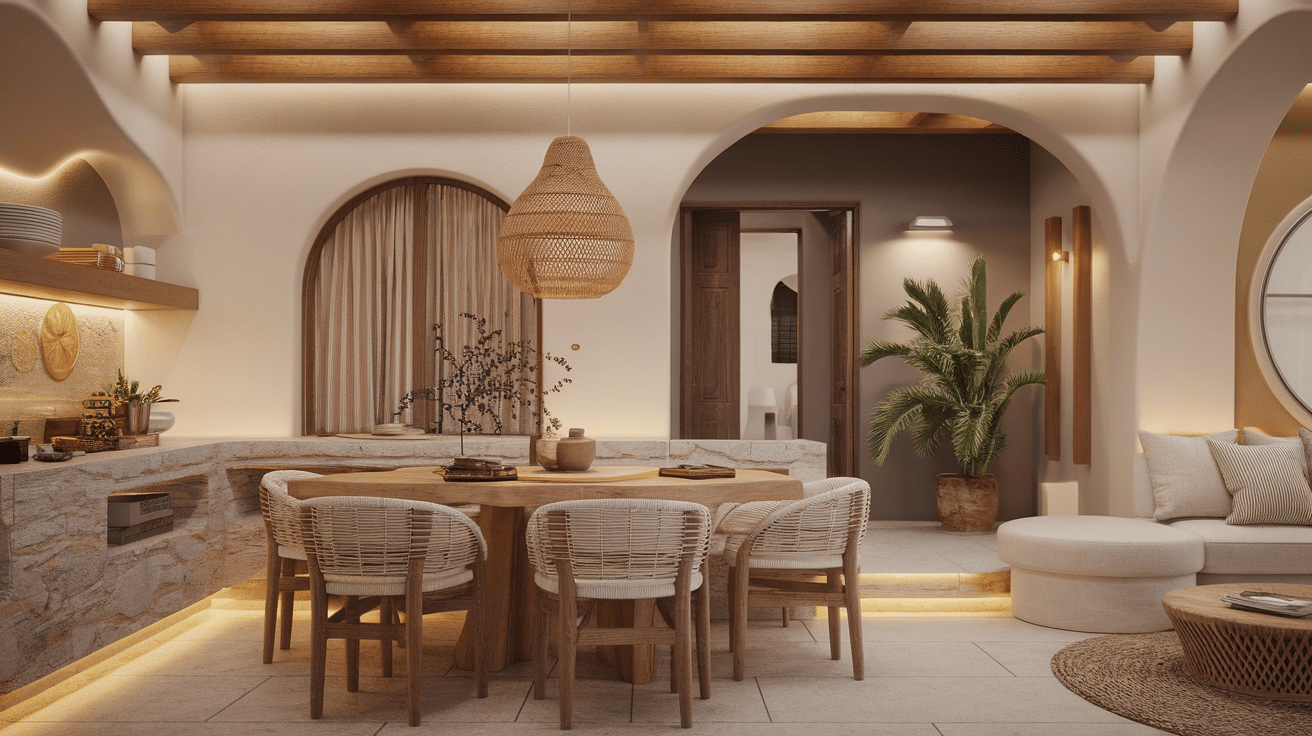
Neutral colors are often used in modern suburban homes. Soft shades like white, gray, and beige create a calm and clean backdrop, helping spaces feel open and fresh.
Natural materials like wood, stone, and rattan are also common. These materials bring in texture and connect the indoors with nature. You might see wooden beams, stone counters, or woven light fixtures.
This style avoids bold colors but doesn’t feel boring. The mix of textures adds quiet interest. It’s a great way to keep rooms simple yet warm and inviting.
Integration of Smart Home Technology
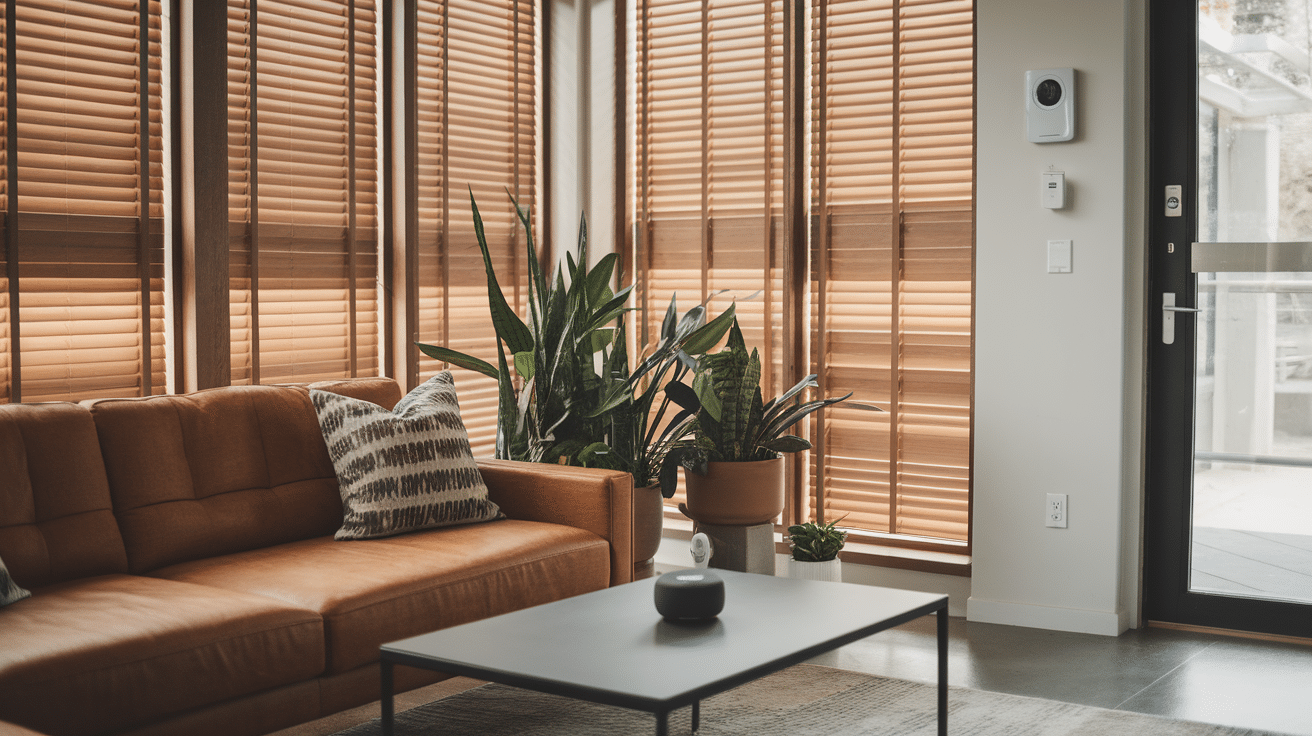
Many modern homes now include smart features to make life easier. These can include smart thermostats, lighting, locks, and speakers—all controlled with a phone or voice. This brings more comfort without extra work.
Smart tech also helps save energy. Automated lights or heating systems adjust based on time or use. This means fewer bills and better control of your home.
Even simple upgrades like video doorbells or motion sensors make a big difference. These tools add safety and convenience to everyday life. Technology is now part of the design, not just a bonus.
Exterior Design and Landscaping
Modern suburban homes don’t just focus on the inside. The outside matters just as much. These homes often mix materials and plan outdoor spaces that feel like part of the home.
Use of Mixed Materials
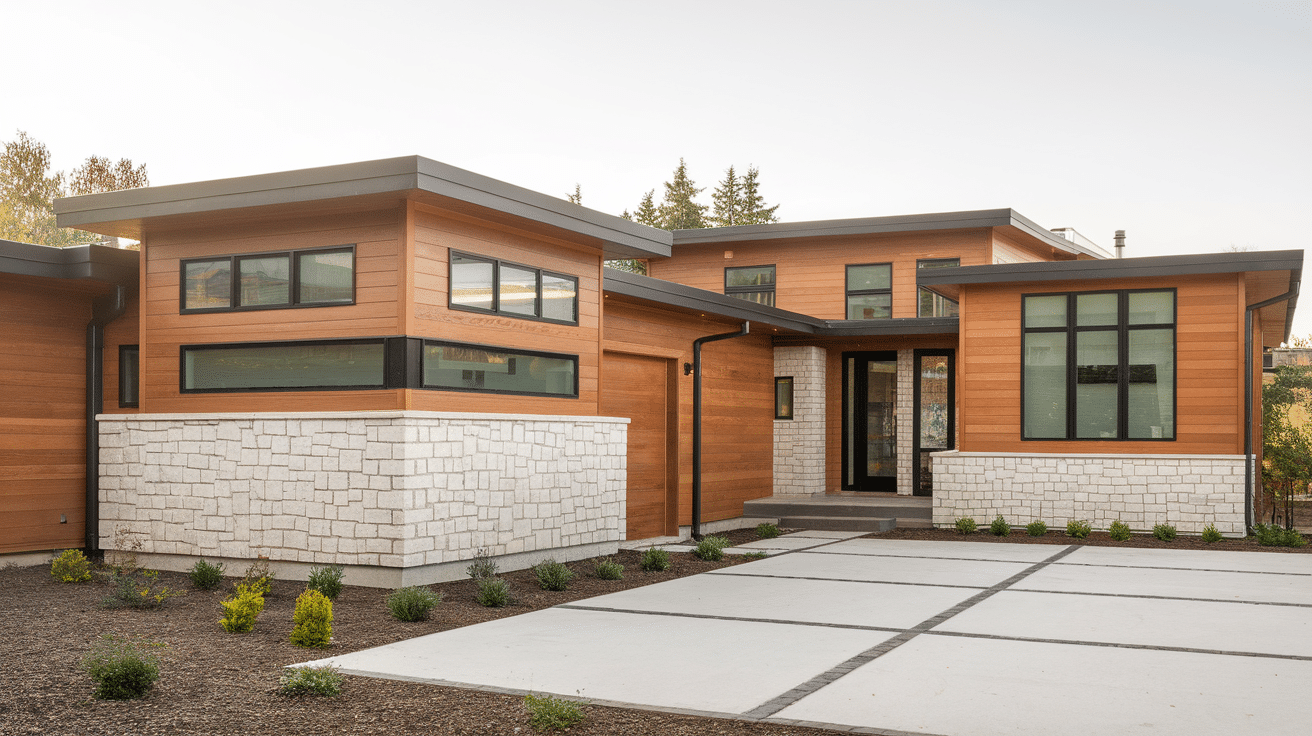
Using more than one material on the outside makes homes look more balanced and fresh. You’ll often see wood, stone, and metal used together. Each one adds something different in texture and color.
Wood can make the house feel warm and natural. Stone adds strength and detail to the base or walls. Metal gives a clean edge, especially around windows and doors.
These materials are chosen not just for looks but also for how long they last. When used together, they create a style that feels complete. This approach gives homes a modern look without being too plain.
Outdoor Living Spaces
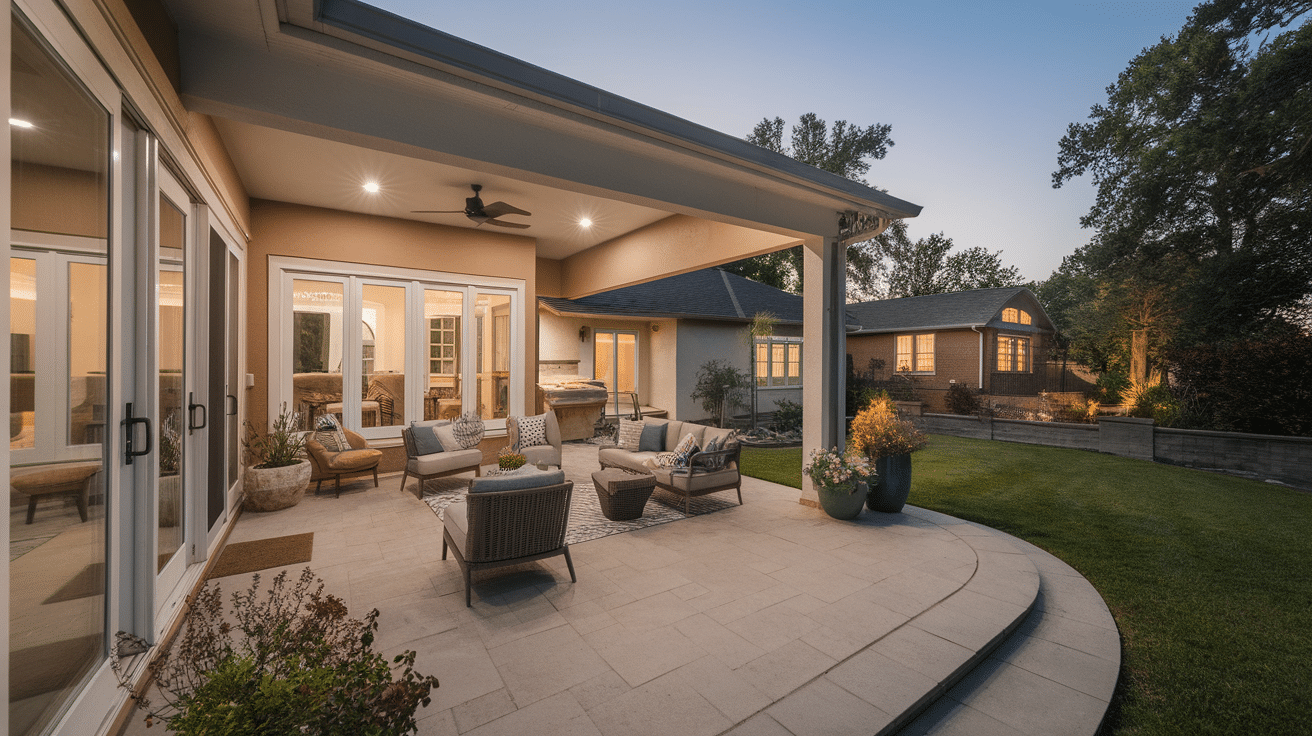
Outdoor areas are often made to feel like part of the house. Patios, decks, and covered spaces extend the living space a family can use. These areas are good for eating, relaxing, or spending time with others.
Sliding doors or big windows help connect the inside to the outside, bringing in more light and fresh air. Furniture and lighting are also chosen to match the home’s interior style.
These outdoor spaces don’t need to be large to be useful. Even a small corner can become a nice spot. What matters is making the space feel easy to use and close to home life.
Sustainable Landscaping Practices
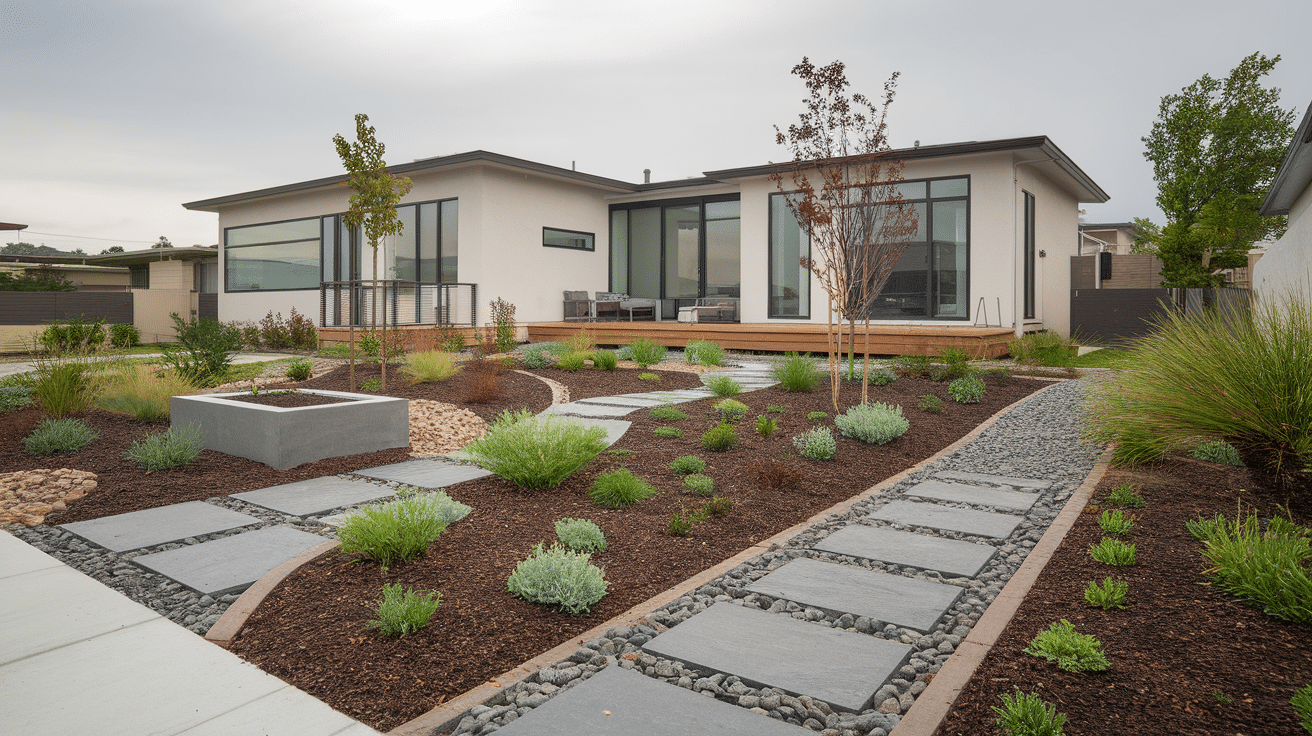
Modern suburban homes often focus on landscaping that’s both nice to look at and kind to the planet. This includes using native plants, less grass, and better watering systems, which help save water and reduce upkeep.
Stone paths, mulch, and gravel can replace high-maintenance lawns. Raised garden beds or drought-tolerant plants are common in many designs. These features still look clean and tidy.
Sustainable choices don’t mean you lose style. They help match the outside to the home’s thoughtful design. In the long run, this approach saves time, money, and resources.
Case Studies of Modern Suburban Homes
Looking at real homes helps show how modern suburban design works in everyday life. These examples show how new builds and updates can follow the same ideas. Each home shares simple shapes, smart use of space, and a connection to nature.
Innovative Designs
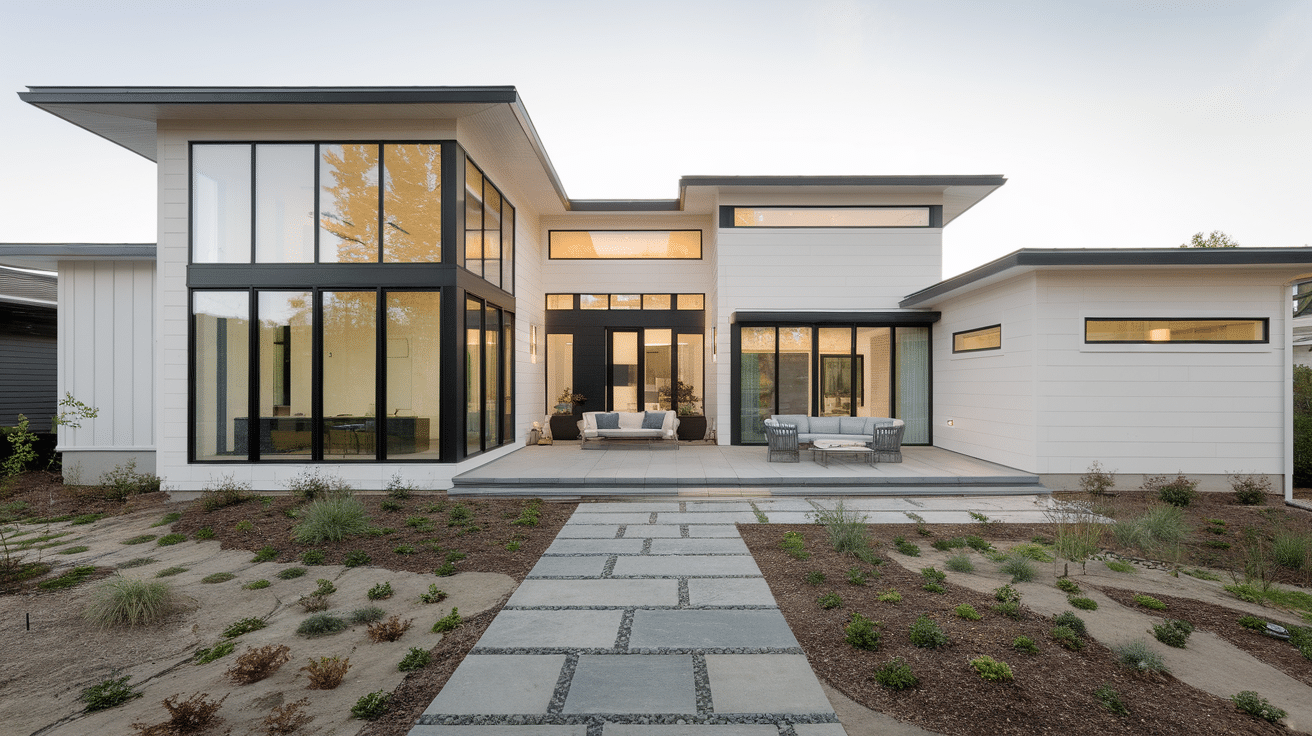
Some new homes stand out because of their bold, clean design. One example is a home with large glass walls, flat rooflines, and smooth white siding. It uses wood panels to warm up the look and stone paths to lead to the entry.
Inside, the space stays open and bright. The kitchen, dining, and living rooms all connect without walls, and smart lighting and natural colors tie everything together.
The outside is just as carefully planned. A small yard includes a sitting area and native plants. The home feels simple but still well thought out.
Renovation Success Stories
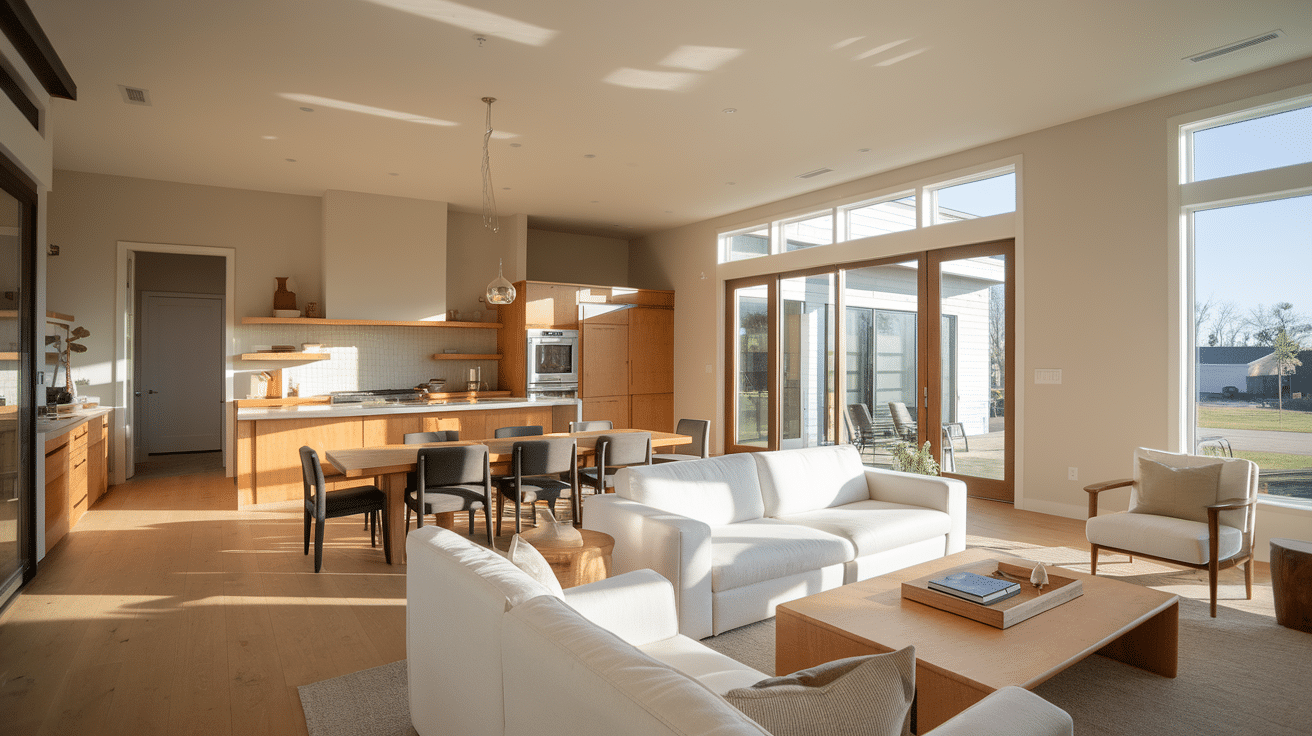
Old suburban homes can be turned into modern spaces without starting from scratch. One project involved a 1980s home with small rooms and heavy wood trim. The update refreshed the space with white paint, new floors, and an open kitchen.
The walls were taken down to open up the living room. Large windows replaced old ones to bring in more light. The outside also got an update with new siding and a small patio.
The home kept its shape but looks and feels brand new. These updates show how small changes can make a big impact. They are proof that modern design can work in older neighborhoods, too.
Conclusion
Modern suburban homes mix clean design with everyday comfort. They often include open spaces, simple lines, and large windows.
These homes use smart layouts that feel open and easy to move through. Natural light and materials help each room feel fresh and balanced.
Outside, mixed materials and simple landscaping enhance the home’s appearance. Patios and decks give families more space to relax and gather.
Many homeowners update older homes to match this modern style. Even small changes can bring big improvements.
Modern design works well in suburban areas. It brings function, comfort, and a fresh feel to the neighborhood. Homeowners looking to update should consider these clear and simple ideas.
Frequently Asked Questions
What makes a home a modern suburban home?
Modern suburban homes often have open layouts, clean lines, and large windows. They blend simple design with everyday comfort.
Are modern suburban homes expensive to build?
The cost depends on the size, materials, and location. Using smart designs and local materials can help manage the budget.
Can older suburban homes be updated to look modern?
Yes, many older homes are updated with new layouts, colors, and finishes. Small changes like paint or lighting can also help.
Do modern suburban homes use smart technology?
Yes, many include smart lights, thermostats, and security systems. These features make life easier and help save energy.
Is modern design too plain for family homes?
Not at all. Modern homes can feel warm and inviting with the right materials and layout. They’re often designed for real everyday living.

